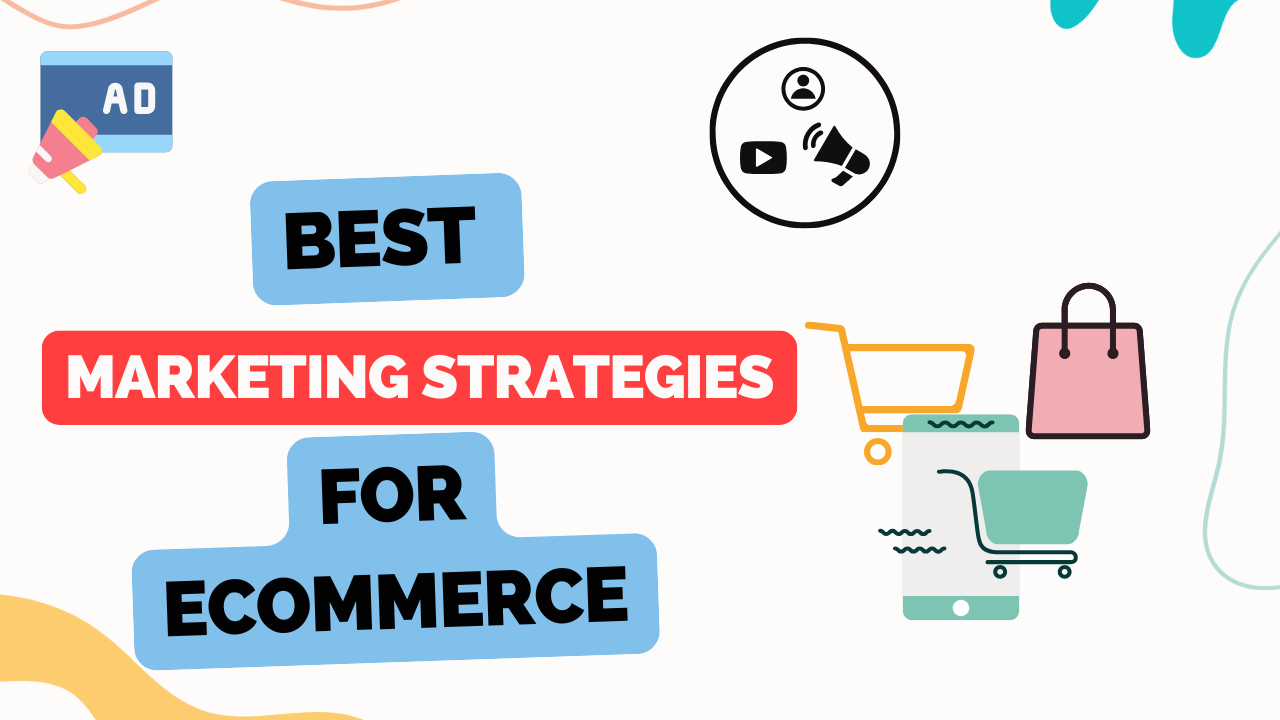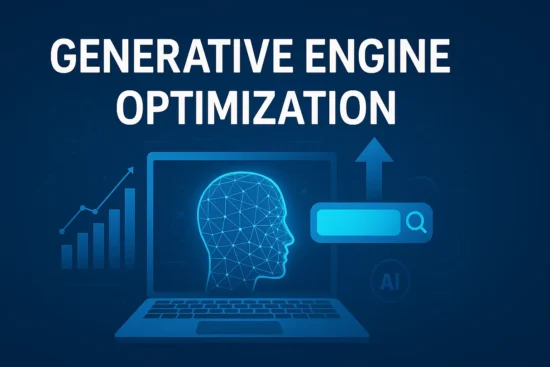
In today’s digital age, ecommerce has become one of the most popular ways to buy and sell products. As an online store owner or marketer, one of your key goals is to attract and retain customers. However, this can be challenging with the constant changes in the online market, consumer preferences, and technology. But don’t worry – implementing the right marketing strategies can help your ecommerce store stand out and boost sales.
In this blog, we’ll explore some of the best marketing strategies for ecommerce that you can use to grow your business.
Why Ecommerce Marketing Matters
Before diving into the strategies, it’s important to understand why ecommerce marketing is so crucial for your online store. Marketing is what drives customers to your website, convinces them to purchase, and keeps them coming back for more. Without a solid marketing plan, even the best products may go unnoticed.
Ecommerce marketing helps you:
- Attract more visitors: Without traffic, your ecommerce store can’t make any sales.
- Build brand awareness: It’s important to let potential customers know who you are and what you offer.
- Increase customer loyalty: Returning customers are often the most profitable, so creating loyalty programs can help boost sales.
- Improve conversion rates: By targeting the right customers with the right strategies, you can turn more visitors into buyers.
Now that you know why marketing is essential for ecommerce, let’s look at some of the best strategies.
“At DigRab, we provide expert insights, tips, and strategies to help you succeed online. Explore our latest blogs and start improving your digital marketing today!
Visit DigRab now and stay ahead of the competition!“

Top Marketing Strategies for Ecommerce
1. Search Engine Optimization (SEO)
Search Engine Optimization (SEO) is the process of optimizing your website to rank higher on search engines like Google. When people search for products similar to yours, your website needs to appear in their search results. Here’s how you can make SEO work for your ecommerce site:
- Keyword Research: Identify keywords that customers use when looking for products like yours. Use tools like Google Keyword Planner, Ubersuggest, or Ahrefs to find relevant keywords.
- On-Page SEO: Make sure each product page includes clear and concise titles, descriptions, and meta tags with your targeted keywords. Don’t forget about images—optimize your images with descriptive file names and alt text.
- Content Marketing: Adding a blog to your website can help drive traffic. Write helpful articles related to your products, such as buying guides, tips, or how-to posts.
- Mobile Optimization: Many people shop on their smartphones, so make sure your website is mobile-friendly.
With SEO, you can increase your store’s visibility, reach a larger audience, and drive more sales.
Social Media Marketing
Social media platforms like Facebook, Instagram, Twitter, and TikTok are perfect for reaching your target audience. Here’s how to use social media for your ecommerce marketing:
- Choose the Right Platforms: Not all social media platforms are the same. Choose platforms that align with your target audience. For example, Instagram and Pinterest work well for fashion and beauty brands, while LinkedIn might be better for B2B ecommerce.
- Create Engaging Content: Post a mix of content, including product showcases, behind-the-scenes looks at your business, customer reviews, and promotional offers. Use visuals like photos and videos to grab attention.
- Paid Social Media Ads: If you have the budget, consider using paid social media ads to boost your reach. Facebook and Instagram offer great targeting options that allow you to reach specific demographics, interests, and behaviors.
- Influencer Marketing: Partner with influencers in your industry to promote your products. Influencers already have a loyal following, which can help you reach more potential customers.
By using social media effectively, you can build brand awareness, engage with customers, and increase sales.
3. Email Marketing
Email marketing is one of the most effective ways to stay in touch with your customers and drive sales. Here’s how to use email marketing for your ecommerce store:
- Build an Email List: Start by collecting emails from your customers. You can offer incentives like discounts or freebies in exchange for their email address.
- Segment Your Email List: Not all customers are the same. Segment your email list based on factors like location, purchase history, or customer preferences. This will allow you to send more targeted, relevant emails.
- Personalized Emails: Use your customers’ data to send personalized emails. For example, send product recommendations based on past purchases or offer birthday discounts.
- Abandoned Cart Emails: If a customer adds products to their cart but doesn’t complete the purchase, send them an email reminding them about the items left behind. Offer them a discount or free shipping to encourage them to complete the transaction.
Email marketing helps you build long-term relationships with customers and can generate consistent sales.
4. Paid Advertising (PPC)
Paid advertising, particularly Pay-Per-Click (PPC) campaigns, is another effective way to drive traffic and sales. With PPC, you pay for ads that appear when customers search for specific keywords. Here’s how to make the most of PPC advertising:
- Google Ads: Google Ads allows you to display ads in search results for relevant keywords. When a customer clicks on your ad, you pay a fee. Make sure to target the right keywords and optimize your ads for the best performance.
- Retargeting Ads: Retarget customers who have previously visited your website but didn’t make a purchase. These ads remind them about your store and encourage them to return and complete the transaction.
- Facebook Ads: Facebook offers detailed targeting options that allow you to show ads to specific demographics, interests, and behaviors. You can also create dynamic ads that show personalized products based on users’ browsing history.
Paid advertising can quickly drive traffic to your store and generate sales, but it’s important to monitor and optimize your campaigns to ensure you’re getting a good return on investment (ROI).
5. Offer Discounts and Promotions
Discounts and promotions are a great way to encourage customers to make a purchase. Here’s how you can use discounts effectively:
- Limited-Time Offers: Create urgency by offering limited-time discounts or flash sales. For example, “50% off today only!” can encourage customers to act fast.
- Free Shipping: Free shipping is one of the most effective incentives for customers to buy. If you can, offer free shipping on all orders or set a minimum order amount to qualify for free shipping.
- Bundle Discounts: Offer discounts when customers purchase more than one product. For example, “Buy 1, get 1 50% off” can encourage customers to buy more items.
- Loyalty Programs: Reward your repeat customers with loyalty points that they can redeem for discounts or free products. This can help keep customers coming back.
Promotions can increase sales and help you stand out in a competitive ecommerce market.
6. Video Marketing
Video is one of the most engaging forms of content online. You can use videos in many ways to promote your ecommerce store:
- Product Demonstrations: Create videos showing how your products work. This is especially helpful for complex products or those that require assembly.
- Customer Testimonials: Show happy customers talking about your products. This adds social proof and builds trust.
- Behind-the-Scenes: Give customers a look behind the scenes of your business. Show them how your products are made, packed, or shipped. This can humanize your brand and make it more relatable.
- Live Streaming: Host live streams where you showcase new products, answer questions, and engage with your audience in real-time. Platforms like Instagram, Facebook, and YouTube offer live streaming features.
Video marketing can help you engage with your audience in a more personal and meaningful way.
7. User-Generated Content (UGC)
User-generated content (UGC) is any content that customers create about your brand. This can include reviews, photos, videos, or blog posts. UGC is valuable because it builds trust and authenticity. Here’s how to encourage UGC:
- Ask for Reviews: After a customer makes a purchase, ask them to leave a review. Positive reviews can help influence potential customers.
- Run Contests: Host social media contests where customers can submit photos or videos using your products. Offer a prize for the best submission.
- Share UGC on Your Website and Social Media: Show off customer photos or testimonials on your website and social media pages. This encourages others to share their content too.
UGC is a powerful way to create social proof and increase brand credibility.
8. Affiliate Marketing
Affiliate marketing is when you partner with influencers or bloggers to promote your products. In exchange for sending traffic or sales your way, affiliates earn a commission. Here’s how to use affiliate marketing for your ecommerce store:
- Find the Right Affiliates: Choose affiliates who have an audience that aligns with your target market. Look for influencers, bloggers, or content creators in your niche.
- Set Clear Terms: Establish a clear commission structure and expectations with your affiliates. Some affiliates work on a per-sale basis, while others prefer a flat fee.
- Track Performance: Use affiliate marketing platforms to track the performance of your affiliates. Monitor clicks, conversions, and commissions to ensure your program is effective.
Affiliate marketing can help you reach a wider audience without spending a lot of money upfront.
Conclusion
There are many marketing strategies that can help your ecommerce business grow. Whether you’re focusing on SEO, social media, email marketing, or paid ads, each strategy plays an important role in attracting customers and increasing sales. It’s essential to find the right combination of tactics that work for your business.
Start by implementing the strategies discussed in this blog, and don’t forget to track your progress. Over time, you’ll learn which strategies bring the best results for your ecommerce store, helping you optimize your efforts and grow your business.
If you want to read more blogs like this, visit our website for expert strategies and tips!




Leave a Reply